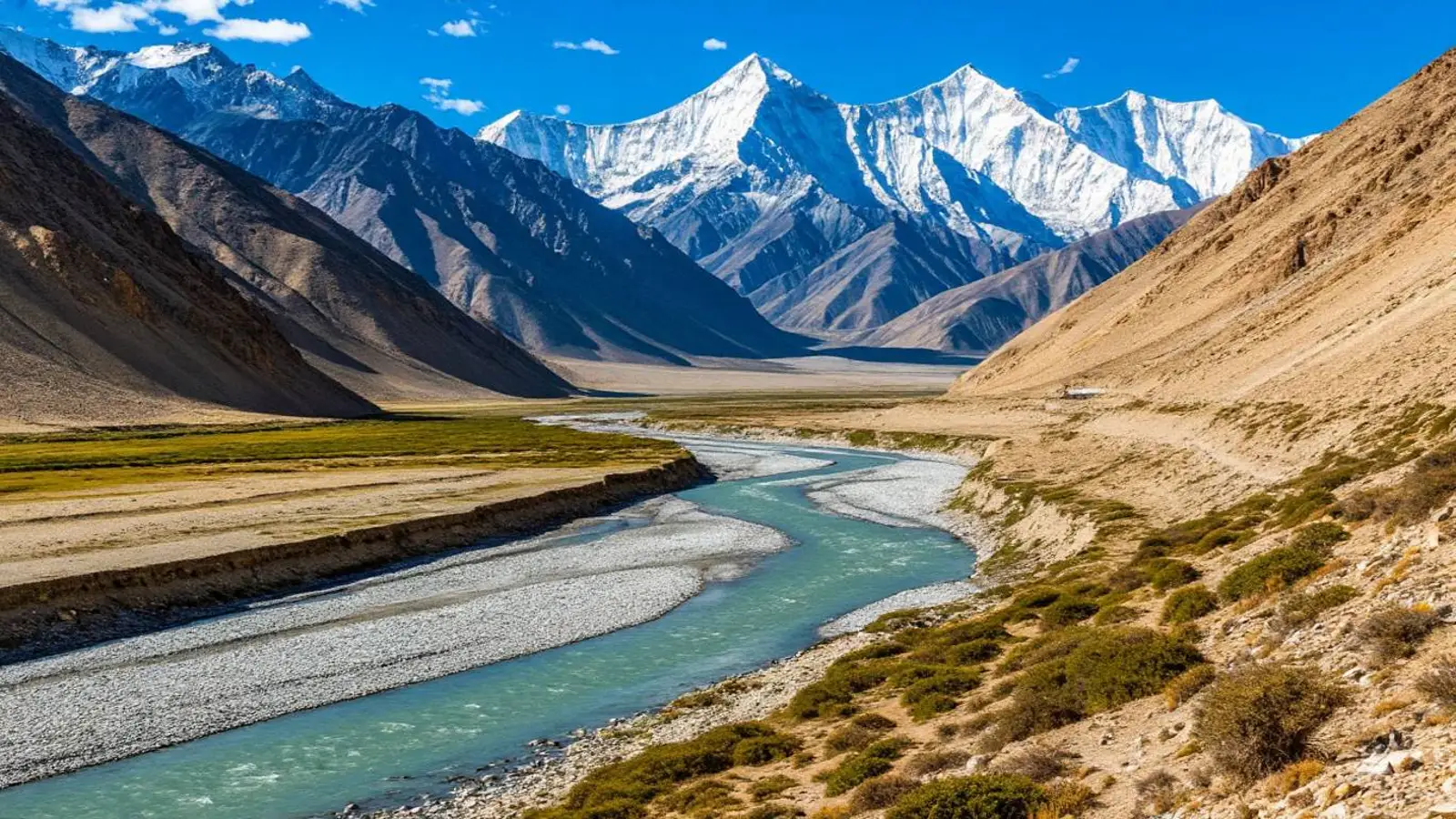Yarlung Tsangpo canyon: how the Brahmaputra cut the world’s deepest valley
Explore the Yarlung Tsangpo canyon in Tibet—the deepest land canyon on Earth. Learn how the Brahmaputra carved the Great Bend, its sacred sites and plans.

Изображение сгенерировано нейросетью Dall-e
For centuries, Tibetans were reluctant to let outsiders into one of the world’s most secluded valleys. Here, among the planet’s loftiest mountain chains, a river later nicknamed the Everest among rivers forced a route through the Himalayas and carved a colossal stone cut—the Yarlung Tsangpo canyon.
Access remains limited even today, yet one thing is clear: this is the deepest land canyon on Earth, tucked along the fringes of the Tibetan Plateau. It’s hard not to sense the river as the region’s quiet protagonist.
Sacred river of the Upper Valley
The name Yarlung Tsangpo may sound unusual, but its meanings are telling: Pure River of the Upper Valley or River Flowing from the Heavens. This is the upper course of the Brahmaputra, one of South Asia’s great rivers. It rises at nearly five thousand meters, where two icy streams merge into one. From there it runs along the Himalayas’ northern flanks, gathering meltwater, summer rains, and fine rock grit—nature’s abrasive that will matter later.
Battle with the mountains
For a long stretch, the Brahmaputra flows parallel to the Himalayas until it confronts a wall soaring up to seven thousand meters. The choice is stark: find a way around or break through. The river opts for the latter. Like a battering ram, it punches through the massif, opening narrow gates where the record-setting canyon takes shape. Here the water makes a sharp turn around Namcha Barwa—the bend known as the Great Bend of the Yarlung Tsangpo.
A canyon deeper than any other
The canyon runs for more than 500 kilometers. In places, its walls rise almost six kilometers above the river. The average depth is smaller, but the scale remains hard to grasp.
The elevation of the canyon floor varies from about 2,900 to 600 meters, and in some stretches the river plunges in a swift cascade. It’s no surprise that kayakers who gained the first permits in the 1990s came back shaken. The first expedition in which every member returned alive was in 2002.
Why the river beat the mountains
Scientists point to several reasons for the Brahmaputra’s success.
- First, the river carries a tremendous volume of water—even near its source.
- Second, over millions of years it transported sand and rock dust that abraded the bedrock like sandpaper.
- Third, the climate played its part: water seeped into cracks, froze, and fractured the stone.
Above all, the process was unhurried. As the Himalayas rose, the river kept cutting, refusing to let new rock seal off its route.
A land kept under guard
Locals have long regarded this place as sacred—especially two waterfalls, Rainbow (21 m) and Hidden Falls (30 m). They concealed them as best they could, and not without reason: terrain this inaccessible tends to draw intense attention. Today, China is considering the canyon area for a major hydropower project. Reports say preparatory work has already begun. How this story develops remains a question for the future.
Canyon or gorge: what’s the difference
Geologists have debated this for years.
One definition says a canyon is a valley almost entirely occupied by a river; a gorge is wider, with room for a river, a road, even a village. Another definition emphasizes the walls: canyon sides should be nearly vertical. By that measure, the Grand Canyon keeps the crown. In pure depth, though, Yarlung Tsangpo leaves it far behind.
The river where it all begins
High in Tibet, the Yarlung Tsangpo starts as a small tongue of ice. By the time it becomes the Brahmaputra, it has carved a passage deeper than any other valley on Earth. For local communities, the river has long suggested that even the hardest barriers yield to persistence—and that where a crack appears, life eventually finds a way.
